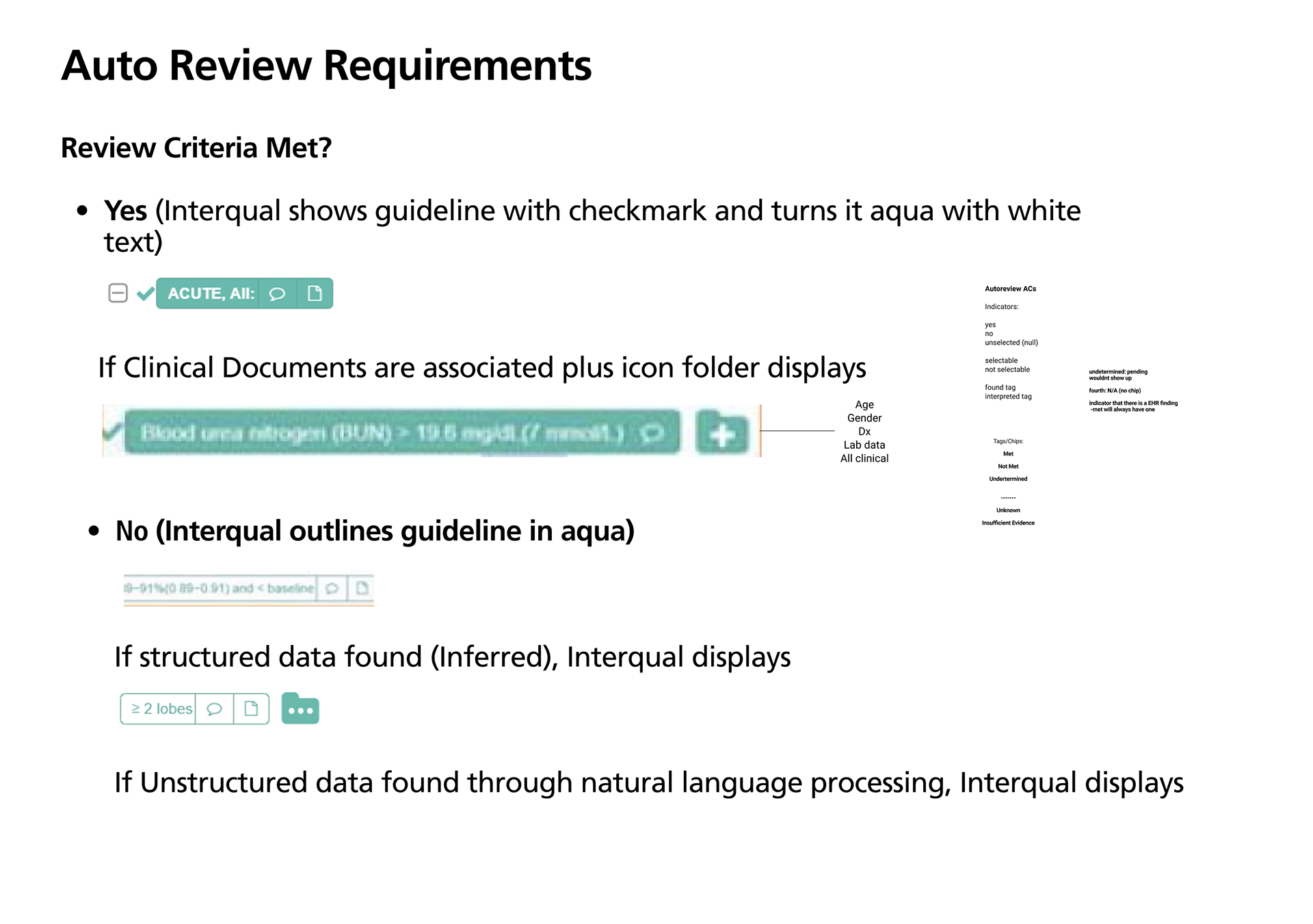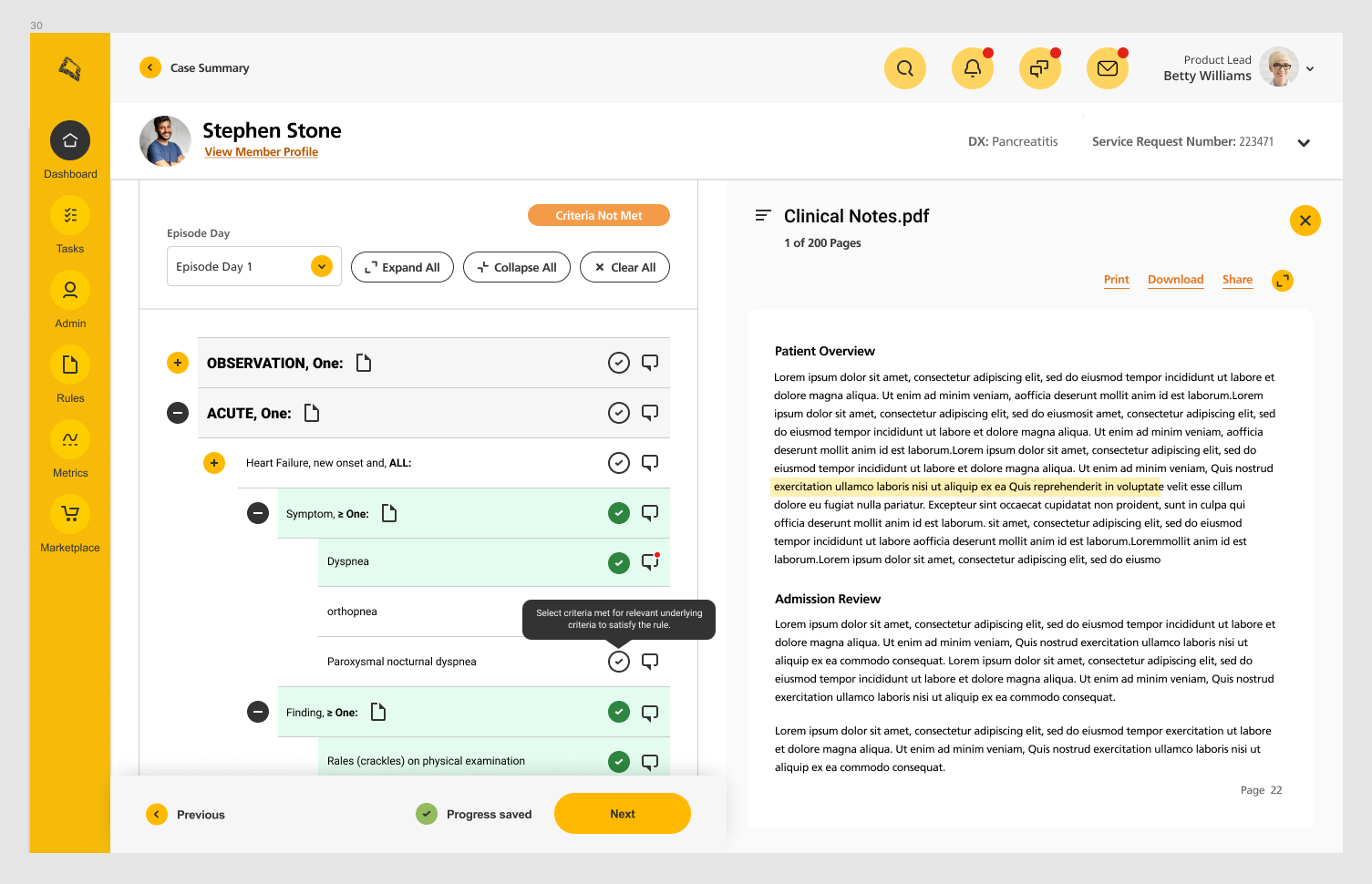CASE STUDY
Optum – Intake Decision Tree
ROLE
UX Designer
UX Designer
TEAM
Director of Product
Product Manager
Development Team
Doctor and Nurse SME's
Director of Product
Product Manager
Development Team
Doctor and Nurse SME's
THE CHALLENGE
Embarking on a transformative journey, our case study centers around the comprehensive overhaul of the Intake Decision Tree, a pivotal tool in our system. The primary objective was to seamlessly transition this vital component to a new platform while simultaneously enriching its functionality and elevating its overall usability.
A critical aspect of this transformation involved the integration of the Optum Design System and Storybook Pattern Library. By leveraging these powerful design resources, our goal was to not only modernize the visual aesthetic but also to align with industry best practices in user interface and interaction design. This strategic move positioned the decision tree within a standardized framework, ensuring consistency and coherence across the entire system.
In the pursuit of an enhanced user experience, we delved deep into the realms of end user personas and the underlying system data. This holistic approach allowed us to glean comprehensive insights, tailoring the decision tree to cater to the unique needs and expectations of our diverse user base. The result was not just a facelift; it was a purposeful redesign rooted in a profound understanding of user behaviors, preferences, and workflow requirements.
A key challenge addressed in this endeavor was refining the design solution to intuitively communicate three distinct statuses: Met, Not Met, and Undefined or Not Applicable. We recognized the importance of presenting information in a clear and accessible manner, ensuring that users could effortlessly grasp the implications of each status. This involved a meticulous process of design iteration, usability testing, and feedback incorporation to fine-tune the decision tree's visual language and interaction model.
Ultimately, the success of this case study lies in the seamless integration of the decision tree into the new platform, accompanied by an enriched functionality that aligns with the expectations of our users. The meticulous attention to detail, coupled with a user-centric approach informed by the Optum Design System, has resulted in a transformed tool that not only meets but exceeds the evolving needs of our user community. This case study exemplifies our commitment to innovation, usability, and the continuous enhancement of our digital solutions.
Embarking on a transformative journey, our case study centers around the comprehensive overhaul of the Intake Decision Tree, a pivotal tool in our system. The primary objective was to seamlessly transition this vital component to a new platform while simultaneously enriching its functionality and elevating its overall usability.
A critical aspect of this transformation involved the integration of the Optum Design System and Storybook Pattern Library. By leveraging these powerful design resources, our goal was to not only modernize the visual aesthetic but also to align with industry best practices in user interface and interaction design. This strategic move positioned the decision tree within a standardized framework, ensuring consistency and coherence across the entire system.
In the pursuit of an enhanced user experience, we delved deep into the realms of end user personas and the underlying system data. This holistic approach allowed us to glean comprehensive insights, tailoring the decision tree to cater to the unique needs and expectations of our diverse user base. The result was not just a facelift; it was a purposeful redesign rooted in a profound understanding of user behaviors, preferences, and workflow requirements.
A key challenge addressed in this endeavor was refining the design solution to intuitively communicate three distinct statuses: Met, Not Met, and Undefined or Not Applicable. We recognized the importance of presenting information in a clear and accessible manner, ensuring that users could effortlessly grasp the implications of each status. This involved a meticulous process of design iteration, usability testing, and feedback incorporation to fine-tune the decision tree's visual language and interaction model.
Ultimately, the success of this case study lies in the seamless integration of the decision tree into the new platform, accompanied by an enriched functionality that aligns with the expectations of our users. The meticulous attention to detail, coupled with a user-centric approach informed by the Optum Design System, has resulted in a transformed tool that not only meets but exceeds the evolving needs of our user community. This case study exemplifies our commitment to innovation, usability, and the continuous enhancement of our digital solutions.
TEAM
I led collaboration with my team "UX Fusion", a Product Manager, and Subject Matter Experts in redesigning this project. Our interdisciplinary team ensured a holistic approach, extending collaboration to include other teams, Product Managers, the Director of Product, and development team leads. Regular input from doctors and nurses refined our designs to meet healthcare professionals' practical needs. This inclusive and iterative process resulted in a solution aligned with project goals, demonstrating our commitment to creativity, constructive critique, and continuous improvement.
RESEARCH
I began by closely examining the existing app, evaluating its functionality and presentation. The findings were systematically documented on a Miro Board, and concurrently, I analyzed the design system to identify elements suitable for the enhanced user experience. To gain a deeper understanding of the end-user perspective, I engaged in sessions with an intake nurse and admin, walking through the system together to uncover their pain points and workarounds. These collaborative sessions proved enlightening, merging the system's functionality with the medical expertise of users and revealing insights that might have eluded a non-medical professional.




IDEATION
I shared diverse design options with my team, ensuring they aligned with the established design system. After extensive reviews and multiple design sessions, it became clear that we needed to introduce a new pattern to the storybook. This addition was essential to meet criteria related to functionality, spacing, and accessibility.
End-user feedback highlighted the need for one-click functionality and the ability to navigate seamlessly within the decision tree while reviewing various elements like notes, citations, comments, and supporting documentation. Additionally, there was a secondary requirement for users to quickly scan a page and differentiate between met and unmet requirements.



DESIGN SOLUTION
After multiple review sessions and prototype demonstrations that included a range of end-user personas such as physicians, nurses, and clinicians, the conclusive designs have advanced to the development stage. I'm eager to test the live system with these personas, anticipating opportunities to refine and iterate based on their real-world interactions and feedback. This iterative process is crucial to ensuring the final product seamlessly aligns with the needs and preferences of the intended users, contributing to the creation of an optimal and user-centric system.


